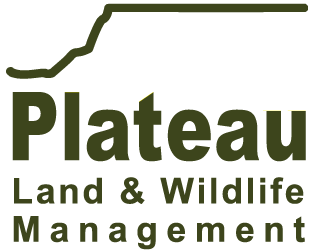Why October Matters in Preparing for Winter Bird Surveys in Texas

Laying the Groundwork for a Successful Winter
October often feels like the unofficial start of “winter bird season” in Texas. Cooler mornings, thinning vegetation, and the arrival of early migrants make it an exciting month to observe wildlife. However, while October offers great birdwatching opportunities, it’s not the prime time for winter bird surveys in Texas. The official survey season begins mid-November through February, when migratory birds have mostly passed and winter residents have established territories.
That said, October is the perfect month to prepare. By using October to get familiar with your property, landowners can ensure more accurate and meaningful results once formal surveys begin.
October: A Month of Transition for Winter Bird Surveys in Texas
October in Texas is a dynamic time, representing a crossroads of fall migration where the avian landscape is in constant flux. A significant number of species are still actively passing through the state on their way to their wintering grounds:
- East Texas serves as a vital flyway, experiencing large numbers of neotropical migrants such as various warblers and thrushes as they continue their journey southward.
- Central and West Texas begin to welcome the first wave of species that will spend the winter, including early-arriving meadowlarks and several species of sparrows settling in.
- South Texas starts to see the arrival of waterfowl, raptors, and grassland birds that have traveled from their northern breeding grounds to take up residence for the colder months.
For property owners who are planning to conduct winter bird surveys in Texas, this month serves as a critical preparatory period. It’s the ideal time to lay the groundwork for the formal survey season. Landowners can use this month to:
- Scout different habitats on their property and thoroughly assess key land features that might attract or support bird populations, like water sources, brush piles, or dense thickets.
- Establish clear survey routes and designated count stations to ensure consistent and comparable monitoring throughout the entire survey period.
- Practice and refine bird identification skills, particularly for the sparrows and other “little brown jobs” that can be tricky, and hone their observation techniques.
- Track and note any changes in vegetation, such as leaf fall, which can significantly affect visibility and influence where birds are most active and easiest to spot.
By diligently taking these preparatory steps in October, landowners effectively set the stage for more accurate, efficient, and successful surveys once the official winter period begins.
The Science of Winter Bird Surveys in Texas
Unlike breeding bird counts, which can be influenced by territorial disputes or nesting failures, winter bird surveys in Texas capture stable patterns of habitat use. These surveys provide critical insights into:
- The diversity of resident and wintering bird species.
- The quality of habitats on your property.
- How previous management practices have impacted bird populations.
- Opportunities for improving or restoring habitat.
Grassland birds such as Eastern and Western Meadowlarks and sparrows are indicators of healthy prairie ecosystems. Woodland species, such as Carolina Wrens or Tufted and Black-crested Titmice, reflect well-structured forests. The presence of these species during your bird surveys can demonstrate that your land provides crucial habitat, including for species experiencing population declines.
Benefits of Winter Bird Surveys Texas for Landowners
Whether your goal is to maintain a wildlife tax valuation, improve songbird habitat, or support native species, conducting winter bird surveys in Texas provides measurable, actionable benefits:
- Assessing Habitat Quality: Surveys reveal which habitats are supporting bird communities and which may need enhancement. For example, the presence of Cedar Waxwings in berry-producing areas or waterfowl in wetland zones can highlight specialized microhabitats that need protection.
- Evaluating Conservation Success: Long-term survey data allows landowners to track trends and evaluate how habitat management practices, such as brush management or supplemental feeding, influence bird populations over time.
- Guiding Future Improvements: Survey results inform decisions like prairie restoration, water source development, or woodland management. They also help landowners understand how their property contributes to broader landscape-level conservation efforts, including wildlife corridors and habitat connectivity.
Conducting Winter Bird Surveys in Texas
Professional surveys adhere to standardized protocols to guarantee that the data collected is both consistent and reliable. Key components of these protocols include:
Survey Methodology:
- Timing: Conduct surveys starting in the morning, as this is when birds are generally most active and vocal, maximizing detection rates.
- Location: Establish fixed survey routes or permanent stations that are representative of all the major habitat types present on the property, such as grasslands, woodlands, and riparian areas.
- Observation: Meticulously record all birds seen or heard during the survey. For each observation, note the species, the number of individuals, the specific habitat type they are using, and their location using GPS coordinates for precise mapping.
Equipment and Resources:
- Optics: Use high-quality binoculars, typically in the 8×42 or 10×42 range, to make clear and accurate identifications of birds, especially those at a distance.
- Data Collection: Carry field notebooks or utilize specialized data-recording apps on a smartphone or tablet to log observations efficiently and accurately while in the field.
- Identification Aids: Bring along Texas-specific bird identification guides to help with visual confirmation or a mobile app such as Merlin Bird ID. Audio recordings of bird calls can also be an invaluable resource for identifying species by sound alone.
- Environmental Monitoring: Use weather monitoring tools to document conditions such as temperature, wind speed, and cloud cover, as these factors can significantly affect bird activity and detectability.
Data Recording and Analysis:
- Abundance Tracking: To track abundance consistently, use standardized categories like “single,” “pair,” “small flock (3-10),” or “large flock (10+).” This method provides a structured way to estimate population sizes.
- Contextual Information: For a more thorough and accurate analysis, always include the survey’s start and end times, detailed weather conditions, and any relevant habitat notes that might influence the findings.
Plateau Land & Wildlife Management: Wintering & Resident Bird Surveys
Plateau Land & Wildlife Management offers professional winter bird surveys in Texas from mid-November through February, providing reliable data on your property’s wintering and resident species.
Service Highlights:
- A Plateau biologist conducts a deep survey of your property’s bird community.
- Identification of species by sight and call, recording both species and numbers.
- A detailed report including species, counts, habitat notes, and survey station maps.
- Qualification as Census activity for your wildlife management plan.
- Opportunity for landowners to accompany the biologist, gaining field experience and insights into bird ecology.
From October Preparation to Winter Bird Surveys Texas
While October isn’t the official winter survey window, it’s the perfect month to prepare your property and yourself for success. By scouting habitat, practicing survey techniques, and noting migratory activity, you’ll enter the mid-November through February survey season with confidence.
Combining October preparation with professional winter bird surveys in Texas ensures you collect meaningful, accurate data. These surveys guide habitat improvements, document conservation efforts, and provide insights for wildlife management compliance.
Take action today and contact Plateau Land & Wildlife Management to schedule a Wintering & Resident Bird Survey and unlock the conservation potential of your Texas property!





Sorry, the comment form is closed at this time.